Aluminum Paste for AAC Block is also known as AAC aluminium powder paste and aluminium powder paste. The key use of aerated aluminium powder for aerated concrete is the reaction between aluminium powder, silica and quicklime during production, releasing the vapour to form a porous structure inside the aerated concrete.
Aluminum Paste for AAC Block is also known as AAC aluminium powder paste and aluminium powder paste. The key use of aerated aluminium powder for aerated concrete is the reaction between aluminium powder, silica and quicklime during production, releasing the vapour to form a porous structure inside the aerated concrete.
AAC is a new type of wall construction material, which is unique in that it is a very lightweight new type of building wall material for external wall insulation. Aerated concrete technology began 100 years ago, China’s technology started late, lagging behind overseas for 40 years. However, the development of China’s aerated concrete industry is indeed very rapid. China’s aerated concrete technology strength has reached the international advanced level.
Aluminum Paste for AAC Blocks is also known as AAC Aluminium Paste and Aluminum Paste Paste. The key use of aerated concrete aerated Aluminum Paste is the reaction between Aluminum Paste, silica and quicklime during the production process, releasing the vapour to form a porous structure inside the aerated concrete.
In the mixing link in the production of AAC blocks, the aerated add Aluminum Paste paste mixing tank, fully stirred into the Aluminum Paste paste metering scale, and finally put into the pouring mixer with lime, gypsum, coal ash and other raw materials. Aluminum Paste in the Aluminum Paste can be embodied with the alkaline substances in the aerated concrete pulp to release H2, resulting in bubbles, so that the aerated concrete pulp pescetto caused by the porous structure.
As a result, the manufacture of aerated concrete blocks generally weigh 500-700kg/m3, only equivalent to 1/4-1/5 of clay bricks, 1/5 of concrete is one of the lighter mix. Compared with ordinary brick and concrete structure building, self-weight relief of more than 40 per cent.
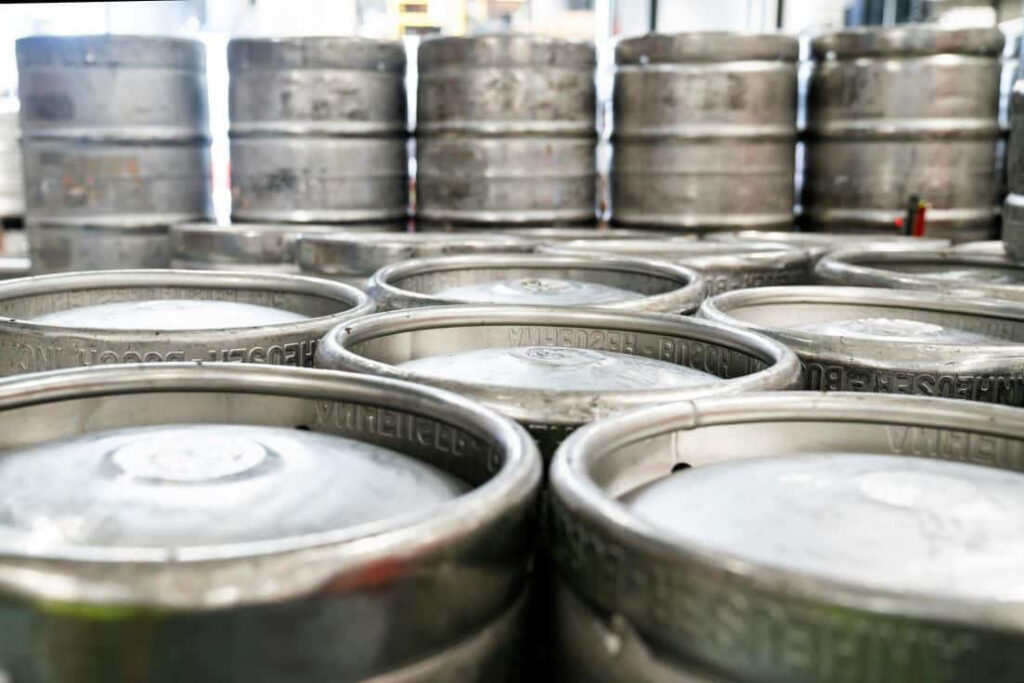
AAC is to be made of lightweight porous silicate commodities by taking silica materials (sand, coal ash, silica tailings, etc.) and calcium materials (lime, cement) as raw materials, mixing with aerating agent (aluminium powder) and making lightweight porous silicate commodities based on the processes of seasoning, mixing, pouring, pre-cultivation, cutting, autoclaving, and maintenance.
Aerating contains a large number of symmetrical and fine pores, so it is called aerated concrete.
Essentially, all AAC, including AAC blocks, foamed concrete and concrete with air-entraining agent.
Narrowly defined as AAC blocks. Generally classified according to the type of raw materials, process load-bearing efficacy.
According to the appearance, AAC can be divided into various specifications of blocks or plates.
Based on raw materials, most of the AAC has three kinds: (cement, lime, coal ash aerated brick); (cement, lime, sand aerated brick); (cement, slag, sand aerated brick)
AAC can be divided into five types according to its use: non-load-bearing blocks, load-bearing blocks, insulation blocks, wall panels and roofing.
Aerated concrete is characterised by light density, high thermal insulation performance, good sound absorption and certain strength processability, and is one of the earliest and most widely used lightweight wall panel materials in China.
Scope of use of AAC
The production and application of non-load-bearing blocks is the most extensive, the bulk density is generally 500 kg/m3 and 600 kg/m3, mainly used for structural masonry and partition walls, not load-bearing; load-bearing blocks have a bulk density of 700 kg/m3 and 800 kg/m3, the project is load-bearing after special structural treatment; thermal insulation blocks have a general bulk density of 300 kg/m3 and 400 kg/m3, mainly used for building exterior walls, the bulk density of 300 kg/m3 and 400 kg/m3, mainly used for building exterior walls, the bulk density of 300 kg/m3 and 400 kg/m3, mainly used for building exterior walls, the bulk density of 400 kg/m3, mainly used for building exterior walls. m3, mainly used for building exterior wall insulation; roof and wall panels are reinforced aerated concrete panels, with different hoops according to different uses.
1、High-level architecture building. Years of practice has proved. The use of AAC in high-rise architecture buildings is economical and reasonable, especially with the inner wall of the block base wall, which has gained general acceptance in the society.
2, Earthquake-resistant geographical buildings. Because of the light weight of AAC, its building seismic force is small, which is beneficial to earthquake resistance. Comparison with the brick building, in the same building and seismic conditions, seismic design defence level and the level of earthquake damage is too big a difference. If the brick building to do 7 degrees of defence, will be destroyed. At this time, the aerated concrete building only to do 6 degrees of defence, will not be destroyed. 1975 Haicheng earthquake period, more than 30 porous concrete buildings slightly damaged, while the neighbouring brick buildings were seriously damaged; 1976 Tangshan earthquake period, Beijing Baijiazhuang, a five-storey aerated concrete loaded building weighing only 700kg/m2. At that time, the seismic intensity of the earthquake was 6 degrees strong, there is no new gap after the earthquake. However, large diagonal cracks occurred in the lower side of the four-storey mixed structure house at 50m.
3, The building in the cold region. AAC has a good thermal insulation effect. The thermal insulation effect of its 200mm thick wall is equivalent to the thermal insulation effect of 490mm thick wall, because of its construction in the cold region of the economic benefits of the building is outstanding and competitive.
Fourth, soft plastic roadbed construction. Under the same roadbed conditions, the number of layers of AAC building can be increased, economically favourable. The main disadvantage of aerated concrete is to collect large, low elasticity abrasive, fear of cold. Thus, aerated concrete is not suitable for the following sites, temperature greater than 80 ℃, acid and alkali environmental damage; long-term wet environment, especially in the cold region.
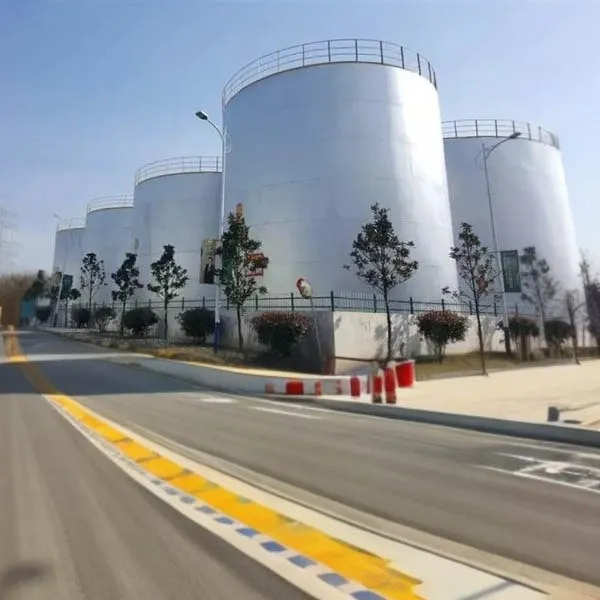
La quantité de pâte d'aluminium utilisée dépend de la densité volumique du CAA. Lorsque l'on utilise de la pâte d'aluminium de même qualité, plus la densité volumique du produit est élevée, plus la quantité de pâte d'aluminium utilisée est faible.
En fait, nous pouvons calculer avec précision la quantité de pâte d'aluminium utilisée en nous basant sur la densité volumique du produit :
Basé sur la formule de réaction de la pâte d'aluminium remplaçant l'hydrogène dans l'eau en milieu alcalin :
2AL 3Ca(OH)2 6H2O-3Ca.AI2O3.6H2O 3H2↑
Selon les statistiques, 2 grammes d'aluminium métal pur peuvent produire 3 grammes de H2, mais dans des conditions standard, le volume de 1 gramme de gaz est de 22,41, et le poids atomique de l'aluminium est de 27. Par conséquent, la production de gaz de la pâte d'aluminium est de :
Vo=22.4X1.241/[3/2X27]g
Selon la formule ci-dessus, la production de gaz de la pâte d'aluminium dans diverses conditions peut être calculée à l'aide de l'équation de l'état de vapeur (V1/T1)=(V2/T2) :
Le volume de la CAA peut être simplifié en deux parties : l'une est le volume approuvé du matériau de base et l'autre est le volume des pores formés après la gazéification de la pâte d'aluminium. La quantité de pâte d'aluminium peut être calculée en fonction du volume des pores :
M aluminium=V pore/(V2K)
Dans le type : M aluminium - la quantité de pâte d'aluminium utilisée dans les produits de l'entreprise (g/cube) ;
K - teneur en aluminium actif
Le volume des pores est égal au volume du produit, combiné à la quantité de matériaux et à leurs proportions respectives pour réduire le volume des matières premières et de l'eau.) Cependant, au cours du processus de production, la production de gaz est affectée par de nombreux facteurs tels que les changements de température et la consistance de la boue. D'après les calculs théoriques, la quantité de pâte d'aluminium est impossible et inutile. L'usine choisit en fonction de l'expérience sociale et ajuste à tout moment. En règle générale, lors de l'utilisation de la pâte d'aluminium, la pâte d'aluminium est ajoutée dans un rapport de 8/10 000 de matériaux secs pour produire 600 kg de béton cellulaire cubique.
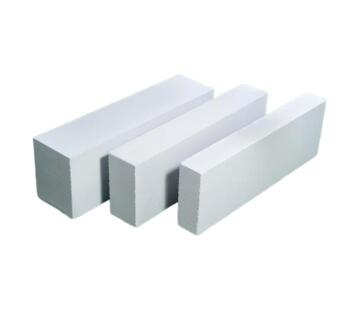
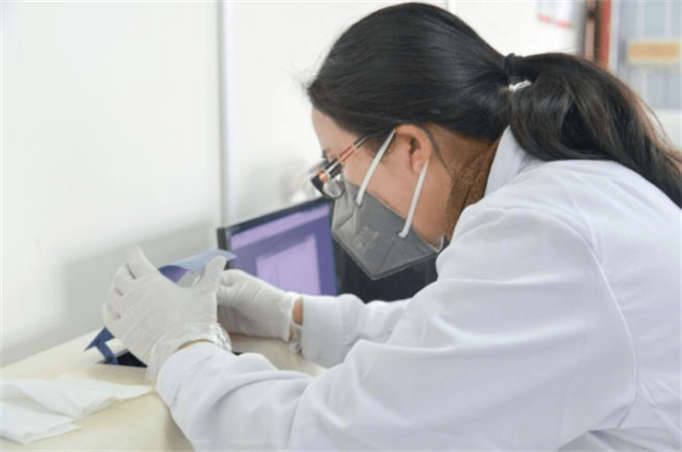
| Nom du produit | Contenu solide (%) | Alumine active (%) | Densité en vrac | Taille médiane des particules (D₅₀) | Adapté à la CAA |
|---|---|---|---|---|---|
| DEG-60 | 70% | ≥96 | 0.15 | 58-62 | <600 |
| DEG-40 | 70% | ≥94 | 0.15 | 36-42 | <500 |
| DEG-35 | 70% | ≥94 | 0.15 | 33-35 | <400 |
| DEG-25 | 70% | ≥94 | 0.15 | 25-27 | <400 |
| DEG-18 | 70% | ≥92 | 0.11 | 17-19 | <350 |
AAC made of Aluminum Paste can not only react with water to cause H2, and explored the strength of aerated concrete, mainly contains the pore structure of AAC. To form an ideal pore structure, the aerating of Aluminum Paste must be consistent with the thickening and hardening of aerated concrete paste. This requires that the Aluminum Paste not only has more metallic aluminium content, but also has a certain particle size and particle shape to ensure a moderate aerating profile.
(1) Aerating capacity of Aluminum Paste
The aerating capacity of Aluminum Paste lies in the amount of Aluminum Paste used in AAC. The gassing quantity of Aluminum Paste is the volume of H2 produced by unit mass of Aluminum Paste and fully reacted under the standard state. 1g of metal aluminium, the theoretical value under the standard state, obviously, the more metal aluminium content in Aluminum Paste, the more gassing quantity, the more vital aluminium in aerated concrete paste (can participate in gassing reflection, resulting in aluminium hydroxide, which is known as vitality aluminium; in Aluminum Paste paste, the other index is different from vitality aluminium is the solid point), the actual In the Aluminum Paste paste, another index is solid state point), the actual gas generation is more. Therefore, the Aluminum Paste paste used for aerated concrete is different from that produced with higher purity aluminium ingot (purity above 98%). Aluminum Paste metal aluminium content is generally required to be not less than 98%, dynamic aluminium content of not less than 89% (Aluminum Paste paste is slightly lower).
(2) Aluminum Paste particle size
The particle size of Aluminum Paste does not affect the amount of gas, but affects the speed of gas. The denser the Aluminum Paste, the larger the specific surface, the larger the surface area to participate in the embodiment. As a result, the faster the duration of gas generation, the faster the speed, the faster the gas generation proceeds.
Generally speaking, Aluminum Paste according to the production of strict quality manipulation, particle size is generally maintained within a certain range; however, due to the differences between the production enterprises and production processes, the actual particle size varies greatly, which becomes one of the important factors affecting the reliability of pouring.
(3) Particle shape
The shape of Aluminum Paste particles has an important influence on the characteristics of Aluminum Paste gas. There are two kinds of Aluminum Paste particle shapes, one is liquid and irregular needle-like, should be produced in the spraying link; the other is broadleaf or irregular fish scale, produced by the spray powder crushing. Liquid spray powder chemical activity is very low, in the AAC slurry basically does not gas. The fundamental reason is that this type of Aluminum Paste is a high temperature molten liquid is compressed air blown into particles, air slowly in the refrigeration link, significant oxidation, resulting in dense alumina purification film, seriously impede the chemical reaction, according to the grinding of Aluminum Paste particles, resulting in bias flat fish scales, there are more new metal surface, and subsequently elevate the area of hair gas reflection. In addition, in the grinding session, the Aluminum Paste particles are milled, impacted, cold rolled, extended and ruptured, which flattens the Aluminum Paste particles with a lot of irregular edges. The metal lattice at the irregular edges is bound to produce more distortions, deformations and cracks into more energetic chemically optimistic areas, which drives the Aluminum Paste to have better gassing characteristics.
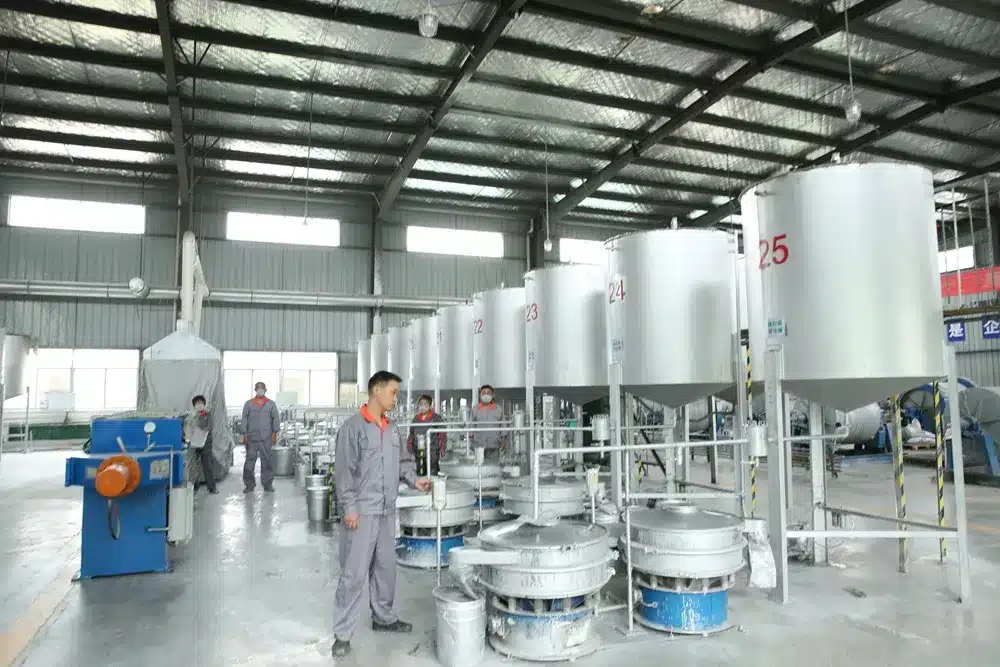
Introduction of Aluminum Paste for AAC Block:
Aluminum Paste for AAC Block is a high-performance, safe, environmentally friendly, and cost-effective construction additive widely used in the production of foamed concrete, ALC panels, aerated concrete, and other building materials.
Key Features of Aluminum Paste for AAC Block:
The main use of aerated Aluminum Paste in aerated concrete is to cause chemical changes in the production process of Aluminum Paste, silica and lime powder, releasing vapour to produce a porous structure inside aerated concrete.
Thus, Aluminum Paste is vital in the production process of AAC block.
Applications of DEG Aluminum Paste:
Instructions:
Packaging Specifications:
Working Principle of DEG Aluminum Paste:
Aluminum Paste for AAC Block forms a protective film to regulate the oxidation rate of aluminium powder and prolong the aeration time. DEG also reduces the surface tension of aluminium powder, making it easier to disperse in concrete and forming a uniform and fine air pore structure.
Aluminum Paste for AAC Block is a high-performance, safe, environmentally friendly, and economical construction additive that has become a new favourite in the modern construction industry.

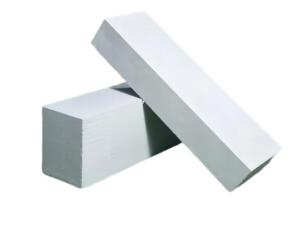
Nous vous suggérons de communiquer avec nous avant d'acheter, nous prendrons en compte tous les aspects et nous vous proposerons un plan de prix juste et raisonnable. En nous choisissant, vous obtiendrez le meilleur produit et le meilleur rapport qualité-prix.
Choosing the right size of product gives you the best value for money. Our Aluminum Paste for AAC block is available in a wide range of particle sizes and purities, with prices varying by specification. By communicating your needs in detail and choosing the right size, you can get the best value for your money.
Plus la quantité achetée est importante, plus le prix unitaire sera bas. Les commandes en gros nous permettent de mieux répartir nos coûts de production et d'exploitation, c'est pourquoi nous sommes heureux de proposer des prix réduits pour les achats en gros.
Le moment et le mode de paiement que vous choisissez ont également une incidence sur le prix. Par exemple, un paiement anticipé intégral peut donner lieu à un prix plus favorable, car il réduit le coût du capital. Veuillez discuter de l'option de paiement la plus appropriée avec notre équipe de vente.
Le transport et la logistique sont également des facteurs qui influencent le coût total de possession. Selon les modes de transport et les destinations, les frais d'expédition varient. Les droits de douane, l'assurance et d'autres coûts doivent également être pris en compte. En calculant ces facteurs avant l'achat, vous pouvez estimer le coût total avec plus de précision.
Le processus de production de la pâte d'aluminium aérée (slurry)/poudre est crucial pour déterminer la qualité et la performance du produit final. Ce chapitre détaille le flux de production, les technologies clés et les points de contrôle de chaque étape du processus de fabrication de la pâte (boue)/poudre d'aluminium aérée afin d'aider les lecteurs à mieux comprendre la fabrication de ce matériau essentiel.
Le flux de production de la pâte (boue)/poudre d'aluminium aéré comprend généralement les principales étapes suivantes :
Avant de commencer la production, la sélection et la préparation des matières premières sont cruciales. La sélection et la préparation des matières premières sont essentielles. principal Les matières premières comprennent la poudre d'aluminium, les additifs (tels que le DEG, les dispersants, etc.) et d'autres ingrédients. La sélection de la poudre d'aluminium est généralement basée sur la taille des particules, l'activité et la pureté. Une poudre d'aluminium très active peut générer plus d'hydrogène gazeux lorsqu'elle réagit avec l'eau, ce qui permet d'obtenir de meilleurs effets de génération de gaz. La sélection des additifs doit tenir compte de leur rôle dans la pâte d'aluminium aérée, comme l'amélioration de la fluidité et de la réactivité.
La poudre d'aluminium préparée et les additifs sont mélangés dans un four à micro-ondes. certain proportion. Cette étape fait généralement appel à un équipement de mélange à haut rendement pour garantir une distribution uniforme des composants et éviter l'agglomération. Le temps et la vitesse de mélange doivent être strictement contrôlés pendant le processus de mélange afin de garantir une combinaison suffisante de poudre d'aluminium et d'additifs, ce qui constitue une bonne base pour les réactions ultérieures.
Les matériaux mélangés doivent être broyés pour atteindre la taille de particule spécifiée. Cette étape est cruciale pour améliorer l'activité de la poudre d'aluminium. L'utilisation de broyeurs à billes ou d'autres types d'équipements de broyage permet de réduire efficacement la taille des particules et d'augmenter la surface de la poudre d'aluminium, améliorant ainsi sa réactivité avec l'eau. Après le broyage, les matériaux doivent également être classés pour garantir la cohérence de la taille des particules et de la distribution du produit.
Au cours de cette étape, la poudre d'aluminium broyée est mélangée avec de l'eau et d'autres additifs nécessaires pour former la pâte d'aluminium. Les conditions de réaction à ce stade (telles que la température et la vitesse d'agitation) doivent être contrôlées pour garantir que la réaction entre la poudre d'aluminium et l'eau est suffisante pour générer une structure de bulles stable. Un meilleur effet de génération de gaz et une plus grande fluidité peuvent être obtenus grâce à un dosage et à une agitation raisonnables.
La pâte d'aluminium aérée (slurry) préparée doit faire attention aux conditions environnementales pendant le stockage et le transport, en évitant les températures élevées et l'humidité afin d'empêcher une réaction prématurée et une défaillance. Ses propriétés physiques et chimiques doivent être vérifiées régulièrement pendant le stockage afin de garantir la stabilité de la qualité du produit. Enfin, la pâte d'aluminium doit être emballée conformément aux normes afin d'éviter toute fuite ou détérioration pendant le transport.
Dans le processus de production de la pâte (boue)/poudre d'aluminium aérée, plusieurs technologies clés ont un impact profond sur la performance et la qualité du produit final :
Le broyage à billes est un important technologie de broyage de la poudre d'aluminium. Le processus de broyage physique peut réduire efficacement la taille des particules de la poudre d'aluminium et augmenter sa surface spécifique. La réduction de la taille des particules contribue à améliorer la réactivité de la poudre d'aluminium, ce qui lui permet de générer plus rapidement de l'hydrogène lorsqu'elle réagit avec de l'eau, formant ainsi une structure de bulles uniforme et stable.
Jeux de technologie de classification un important La classification des poudres d'aluminium joue un rôle important dans la cohérence de la distribution granulométrique des poudres d'aluminium. Grâce à la classification, les poudres d'aluminium de différentes tailles peuvent être séparées, ce qui améliore l'activité et l'adaptabilité du matériau. Une distribution granulométrique appropriée peut optimiser la formation de bulles et améliorer la résistance et l'isolation thermique du béton cellulaire.
Dans le processus de préparation de la pâte d'aluminium, le contrôle des conditions de réaction (telles que la température et la durée) est crucial. Des conditions de réaction raisonnables peuvent garantir que la réaction entre la poudre d'aluminium et l'eau est suffisante pour générer un nombre adéquat de bulles uniformément réparties. L'application de la technologie de contrôle de la réaction permet d'améliorer la stabilité et la consistance du produit.
La performance du produit peut être améliorée en optimisant continuellement la formulation de la pâte d'aluminium (slurry). Par exemple, l'ajout de quantités appropriées de certains additifs peut augmenter la vitesse de réaction de la poudre d'aluminium et améliorer la fluidité et la stabilité de la pâte d'aluminium. En outre, pour les différents besoins d'application, les entreprises peuvent développer divers types de pâte d'aluminium afin de répondre aux différents besoins du marché.
Lors de la production, le contrôle des conditions environnementales (telles que la température et l'humidité) est également crucial pour garantir la qualité du produit. En particulier lors des étapes de stockage et de transport, il est nécessaire de fournir des conditions environnementales appropriées pour éviter que la pâte d'aluminium ne se détériore en raison des changements environnementaux.
Le contrôle de la qualité est un important tout au long du processus de production afin de garantir la stabilité des performances de la pâte (boue)/poudre d'aluminium aéré. Les entreprises mettent généralement en place un système complet de gestion de la qualité, qui comprend les éléments suivants
Avant le début de la production, toutes les matières premières doivent subir un contrôle de qualité strict afin de s'assurer qu'elles répondent aux normes de production. L'activité, la pureté et la distribution granulométrique de la poudre d'aluminium doivent être testées pour déterminer si elle répond aux exigences de la production.
Au cours du processus de production, les paramètres de chaque étape (température, humidité, temps de mélange, etc.) sont contrôlés en temps réel afin de garantir que le processus de production se déroule toujours dans les meilleures conditions. En outre, l'équipement de test en ligne permet de détecter et d'ajuster les problèmes à temps afin d'éviter la création de produits non qualifiés.
Une fois le produit fabriqué, il faut procéder à des tests de performance complets du produit fini, y compris des indicateurs tels que la fluidité, la production de gaz et la résistance à la compression, afin de s'assurer qu'il répond aux normes en vigueur et aux besoins des clients. Seuls les produits ayant passé des tests stricts peuvent être mis en vente sur le marché.

Questions Customers Often Ask When Looking for DAluminum Paste for AAC BlockFactory
1. Votre usine est-elle une Aluminum Paste for AAC Block manufacturer?
Réponse : Oui, nous sommes un fabricant professionnel de pâte d'aluminium DEG avec de nombreuses années d'expérience de production et une technologie de production avancée.
2. What are the quality indexes of Aluminum Paste for AAC Block in your factory?
Answer:The quality indexes of Aluminum Paste for AAC Block in our factory are as follows:
Solide contenant : 70±1
Temps d'aération retardé : 1-3 minutes
Aluminium activé : ≥92
Uniformité de la taille des particules : élevée
3. What is the price of Aluminum Paste for AAC Block in your factory?
A: The price of Aluminum Paste for AAC Block in our factory depends on the specific model and quantity, please contact us for detailed quotation.
4. Quelle est la quantité minimale de commande de pâte d'aluminium DEG dans votre usine ?
R:La quantité minimale de commande de boues d'aluminium DEG de notre usine est de 1 tonne, en fonction des besoins.
5. What kind of after-sale service can your Aluminum Paste for AAC Block provide?
Answer:Notre usine fournit les services après-vente suivants :
Garantie de qualité des produits
Conseils techniques
Suivi du service après-vente
6. Can your Aluminum Paste for AAC Block be customized?
Réponse : Oui, nous pouvons personnaliser la production de pâte d'aluminium DEG en fonction des exigences des clients.

Chez Five Star Material, nous comprenons que chaque projet est unique et notre objectif est de fournir les meilleures solutions personnalisées à chaque client.
Nous vous contacterons dans les 24 heures.
Pour toute demande urgente, veuillez nous contacter par whatsapp No : +86-18001668319

